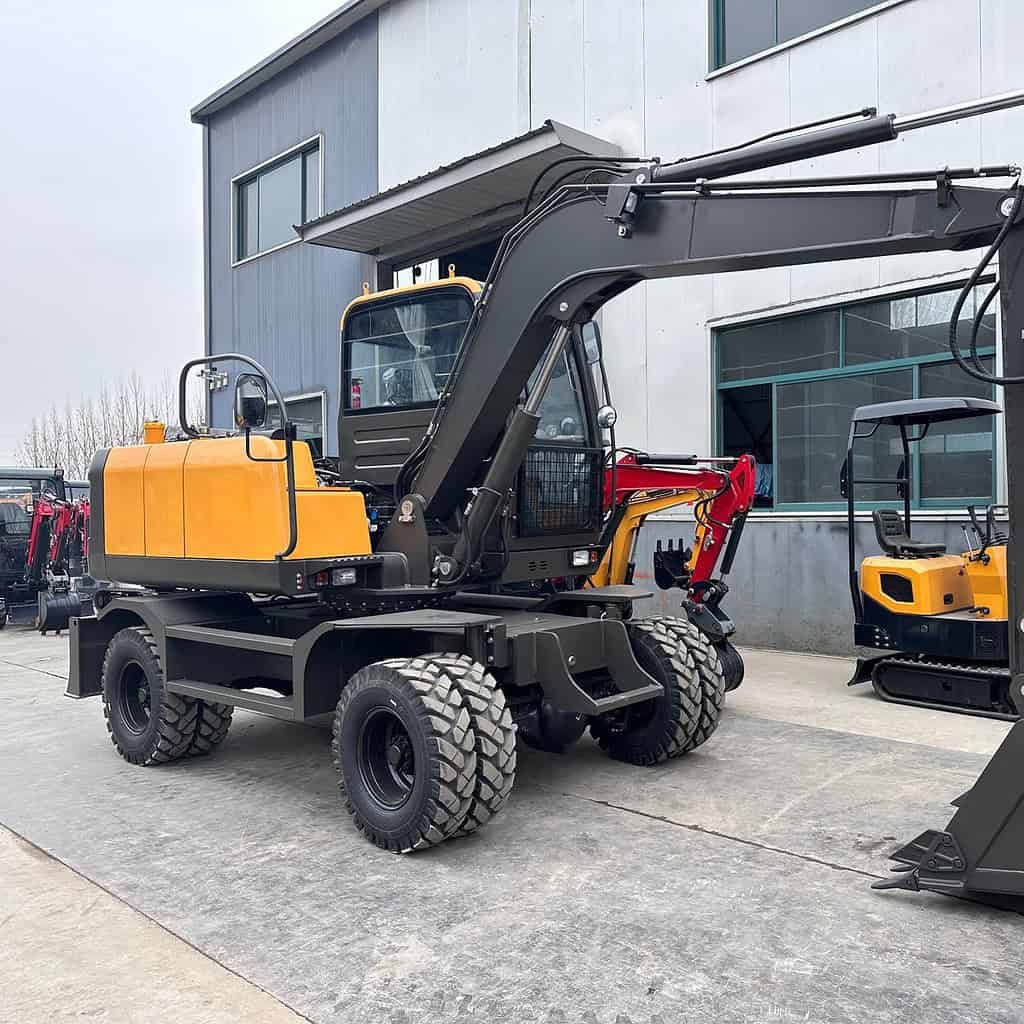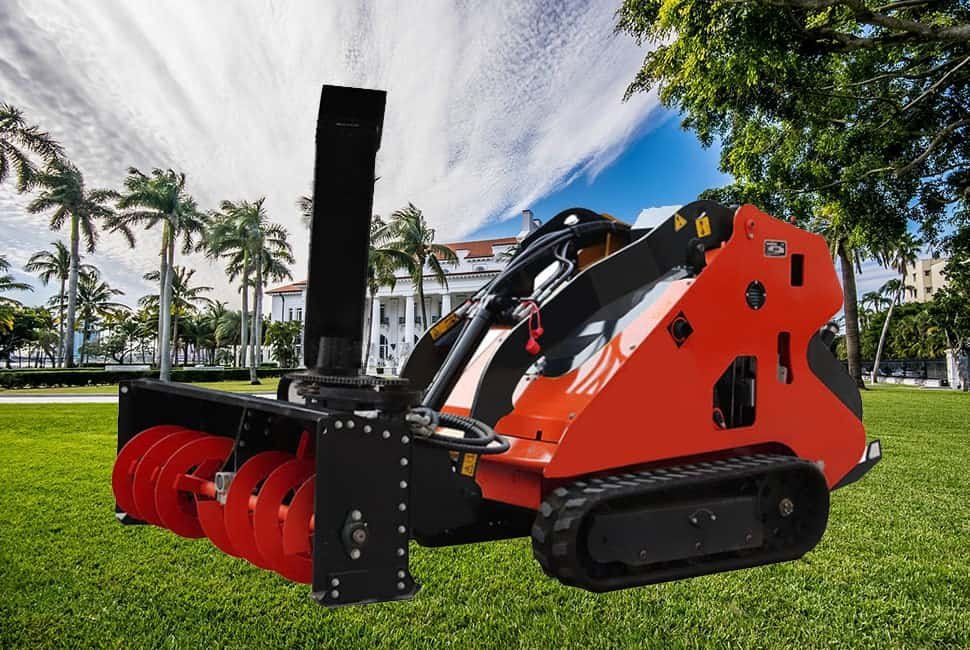Excavators are a critical piece of the modern construction and engineering worksite. These powerful pieces of equipment are used for many different applications, including things like commercial and urban
development, underground projects, highway work, and even agricultural projects. As technology has advanced, excavators have become more efficient and versatile, not to mention more environmentally friendly. In this article, we are going to take a deep dive into what excavators are, the different types you can find, how they are getting smarter, the economic impacts of these machines, and the current market trends for them. These are big-boy tools for big-boy jobs and we’re going to show you everything you didn’t know you needed to know.
The Anatomy of an Excavator
An excavator is made up of several different critical components, each of which has to work together to make the whole machine work the way it needs to. Knowing what these components are, and how each one works, will help you understand what an excavator is capable of, whether you are in the cab operating the machine or just watching it work on the job.
- Boom: The boom is the long arm on the excavator that extends from the main machine. From the cab, you can use the controls to move the boom and extend it out across a wide area to dig material or move large objects.
- Stick: The stick is attached to the end of the boom and extends further out to control depth and the angle of the bucket.
- Seau: The bucket is the attachment for the end of the stick. It comes in various shapes and sizes and can be used for moving material around, digging, lifting, and loading.
- Taxi: The cab is where the operator sits and controls the machine.It’s where the operator sits in comfort and with visibility. Over time, the cab of an excavator has become more advanced, with the addition of modern controls and ergonomic features.
- Tracks or Wheels: Excavators can have tracks or wheels. Track machines are more stable on rough ground, whereas wheeled excavators are faster on smooth surfaces.
- Moteur: The engine in an excavator is what provides all the hydraulic power to do all the work. With advancements in engine technology, operators can get fuel-efficient, environmentally friendly machines.

Types of Excavators and Their Applications
Excavators come in various types, each designed for specific applications. Here’s a closer look at some of the most common types:
- Pelles sur chenilles : These are what you probably picture when you think about typical construction site excavation equipment. They have tracks on the bottom and are used for rough terrain to do big, heavy-duty jobs. You’ll find them most commonly doing tasks that involve digging big holes for buildings or grading land for construction.Wheeled Excavators: These are big backhoes that have wheels instead of tracks underneath them. Because they have wheels, they travel at higher speeds on surfaces like concrete and asphalt than a tracked machine. They are used in urban settings for tasks such as maintaining roads, landscaping, or doing work in urban areas.
- Mini-pelles : You would see mini excavators at smaller construction sites or residential areas where the material needs to be worked in tight areas where access is limited. They are used for digging, lifting or
- landscaping at home.
- Long Reach Excavators: Long reach excavators are crawler excavators, which are standard size, that have a longer boom reach that extends further out to do tasks like dredging or digging deep holes.
- Hydraulic Excavators: These are the typical types of excavators you see with the kingfish on the boom arm. These machines use hydraulic power to do all kinds of work and are perfect for different types of applications in construction, demolition, and any type of educational commercial forthi research institutional purposes, including use for digging.
- Electric Excavators: With environmental concerns being a big part of the discussion when it comes to modern construction, electric excavators are coming to the forefront. These machines make less noise and significantly fewer emissions, which makes them a quiet and clean choice in urban areas where the air quality is a concern.

Technological Advancements in Excavators
The excavation industry is witnessing rapid technological advancements that enhance performance, safety, and efficiency. Here are some key innovations:
- Telematics: Telematics systems provide real-time data on the performance and location of a piece of equipment, as well as when it needs maintenance. This data allows operators to monitor their machinery from a remote location and optimizes the usage of the equipment, reducing time spent doing things that don’t matter or directly impact the overall operation.
- Automation and Robotics: There is a lot of automation that goes into modern excavators. This technology allows these machines to operate on their own and perform extremely detailed, precise activities in harsh environmental circumstances, optimizing the safety of humans.
- GPS and Machine Control Systems: Modern excavation technology makes it possible to dial in the precision of an operation using GPS systems. By doing so, factories and construction companies can
produce more accurate cuts of material, reducing waste and increasing speed and accuracy in a job. - Hybrid and Electric Powertrains: The green movement is here, and hybrid and electric machines are becoming more commonly used. They use less fuel and produce less emissions while at the same time maintaining the same level of performance you would expect from a well-engineered piece of equipment.
- Smart Attachments: High-tech digging apparatuses, or attachments, are the bomb. These things have multiple moving parts that are driven by hydraulics and can independently accept different tools to do different jobs. This type of machine makes one person very, very productive with a machine.
Economic Impact of Excavators
The economic impact of excavators is significant, influencing construction costs, project timelines, and overall productivity. Here are some key considerations:
- Cost Efficiency: Excavating is expensive. However, using an excavator can save labor money and get jobs done faster. Because excavators can handle tougher areas to work in, that means you’ll have fewer work stoppages or downtime. When a job has fewer delays, the project comes in under budget. Nobody from your job site is questioning if you’ll get a job done faster.
- Job Creation: With the invention and growth of the excavator, it has created a lot of jobs. It has been a job creator, creating a need for more people who understand how to drive the machines, do the work, and maintain the machines so that more people can go to work.
- Infrastructure Development: Excavators help you build things like bridges, roads, and buildings. Without them, you wouldn’t be able to prepare a site or build the big engineered cuts and fills necessary for developments to go forward. If you can’t build infrastructure, you can’t grow and upgrade a community.
- Market Trends: Global economic conditions heavily influence demand of products like excavators. Some markets, such as Asia and Africa, are seeing a lot of construction start for the first time, creating a large demand for these machines. Manufacturers are spending more time focusing on making products for these developing construction economies. That said, manuthan so profitable.
Market Trends and Future Outlook
The excavator market is evolving, shaped by technological advancements, environmental concerns, and changing consumer preferences. Here’s what to expect:
- Growing Demand in Emerging Markets: As the construction industry starts expanding in newly developing countries, their need for equipment like excavators will increase. This places an emphasis on equipment manufacturers and exporters will have a growing need for these machines and should consider making products for these newly emerging construction economies.
- Sustainability Focus: Industry practices are moving towards sustainable operations and products. Future equipment will likely focus on green technologies that create less pollution, have less of a carbon footprint and that help maintain the planet’s quality for all of us.
- Increased Automation: We’re going to continue the move to make machines run themselves. Excavators will have the benefits of robotics and artificial intelligence with newer machines, providing better safety practices and doing a lot of work differently and better.
- Customization and Specialization: As all kinds of work are becoming more complex, there will be an increasing demand for special equipment built specifically for customer purposes. Manufacturers must be adaptable and faster to market with products that respond and meet that demand.
- Economic Resilience: The excavation community expects equipment will continue to be in demand, even in down economic times. Your infrastructure will have to be built, and people need to be working.
Conclusion
Excavators aren’t just big, hulking machines; they are the backbone of modern construction and infrastructure work around the world. Thanks to ongoing tech upgrades and innovation tied with a focus on sustainable practices, the excavator business is posed for considerable growth.Excavator technology will continue to drive the future of construction and engineering. Everyone involved in excavation from manufacturing to operation and government needs to understand where we are trending.
WhatsApp For More Detailed Information +86 19315780097


